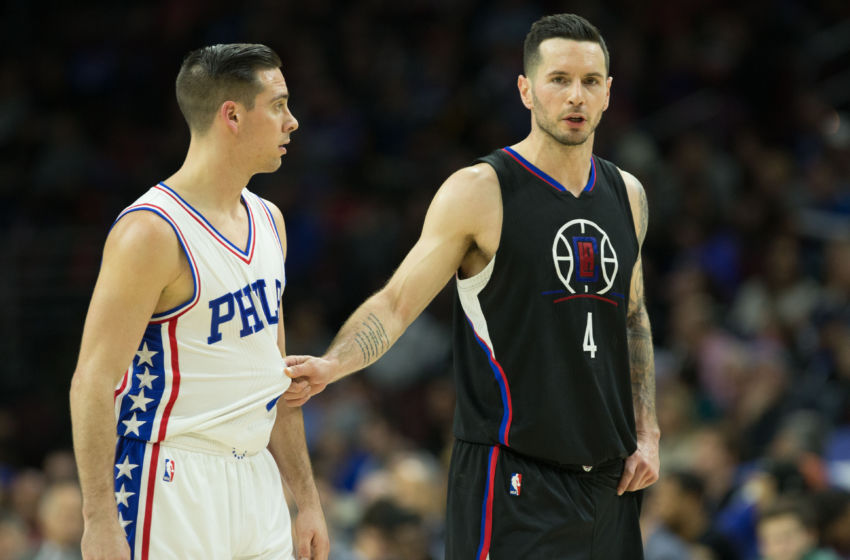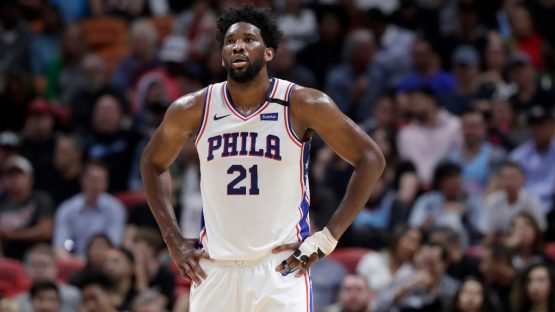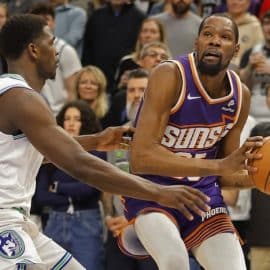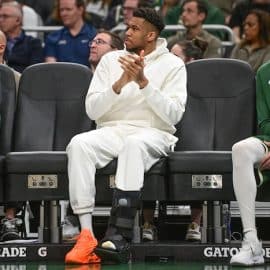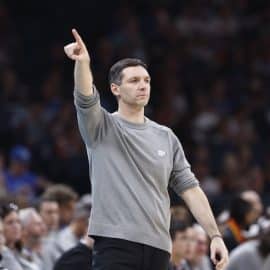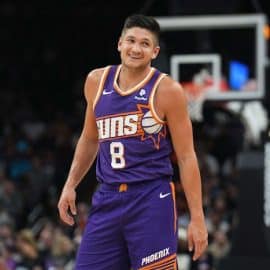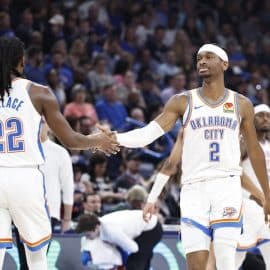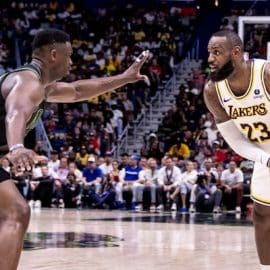As the league’s contenders fight to catch the Warriors, the lower rung squads have more work to do. Which lottery teams have used free agency to climb up a rung?
Every year teams in the playoffs fall back into the pack, and teams from among the lottery rise up to take their place. Chalk it up to parity, to a salary cap, or to the Circle of Life – the lottery will not be the same fourteen teams next season.
While the draft is the most obvious way lottery teams add elite talent, rookies rarely come in and help a team win from day one. LeBron James, the best top overall pick in NBA history, didn’t lead the Cleveland Cavaliers to the postseason until his third season.
Rather, those teams that go from lottery to playoffs often make their move in free agency, using cap space and the promise of a more exciting future to convince talent to come aboard. This summer has been no exception, as lottery teams have made their move across the league.
Who are the teams to make the biggest additions since July 1st? And are those moves likely to result in a longer season, or are they still steps away from that goal?
Not on the List
Miami Heat – They pivoted from losing out on Gordon Hayward to re-sign wayward pieces who will not replicate career years and add a center when they have two already. There is a lot of money committed to this roster and it may not be very good.
New Orleans Pelicans – The Pelicans were forced to re-sign Jrue Holiday at his number, not theirs, because they have no flexibility on this roster.
Detroit Pistons – With restricted rights to Kentavious Caldwell-Pope, Detroit was in the driver’s seat to wait out the market and re-sign a legitimate two-way player. Instead they signed a positionless guard in Langston Gallaway for too much money, then traded Marcus Morris for Avery Bradley when the former is on a bargain contract and the latter is a free agent next summer. Now KCP is going to sign elsewhere and everything could fall apart in Detroit.
1. MINNESOTA TIMBERWOLVES
The young Wolves were supposed to make “the leap” last season, but in hindsight expecting a team filled with 20 year-olds to defend at an elite level was premature. This year, even without any major moves, the team could have expected to rise to the edge of the postseason – if not beyond.
But Tom Thibodeau and the rest of the organization was not content to stand pat, but rather moved quickly and often throughout the offseason. On draft night they flipped three pieces for Jimmy Butler, but that move is not a part of this discussion. It’s Minnesota’s other moves that show how serious they are to compete.
Jeff Teague, while younger than Kyle Lowry or George Hill, is still older than Ricky Rubio and significantly older than this team’s core. Whether or not he is a better player than Rubio, he is a better fit on this roster – his ability to space the floor at an average level is a significant step more than Rubio and will help this offense breathe.
Inside Thibs went back to his former rosters, signing Taj Gibson as a veteran bruiser to give the Wolves toughness on and off the court. Then most recently Jamal Crawford, fresh off a buyout from the Atlanta Hawks, added his name to the Minnesota roster as a scorer off the bench. Teams don’t add veterans such as Gibson and Crawford unless they intend to compete now.
While the Timberwolves may have left moves on the table that would have fit their team and future better, they are unquestionably better than last year and well-equipped to make the postseason. With as many as three new starters, this team has reinvented itself around its two young stars-in-waiting, and they are ready to show their teeth to the rest of the NBA.
2. DENVER NUGGETS
NBA Free Agency is far from over, as dozens of players are yet to sign contracts to fill holes around the league. The Denver Nuggets still have decisions to make in filling out their roster, specifically in finding defense on the wings.
But Denver solved its most pressing needs this offseason. They came in needing to add a second star to play alongside Nikola Jokic. Ideally this player would be an intelligent passer to fit the system, able to space the floor on offense and guard the more imposing frontcourt player on defense. In other words, the Nuggets would have created Paul Millsap in a laboratory.
The contract – with only two seasons guaranteed, well below the max – seems like a steal compared with the money players got last summer. Add in the fact that Denver was able to add Millsap without giving up any assets other than cap space – which may have been the reason Danilo Gallinari left – and this team got much better. They should be in the playoffs next year.
3. PHILADELPHIA 76ERS
Any team in the East with a pulse next year has a shot at the postseason (sorry Brooklyn, Orlando, Chicago, and New York) so the 76ers had a decent shot even if they continued to hoard their cap space. Counting on the additions of a healthy Joel Embiid and rookie years for Ben Simmons and Markelle Fultz, Philadelphia was a lock to improve this season.
But Philly didn’t sit out free agency, instead spending their money on one-year deals. J.J. Redick, one of the league’s very best sharpshooters, is on board on a one-year, $23 million contract. Amir Johnson joins a shockingly young frontcourt rotation on a one-year deal of his own. Robert Covington could soon receive a contract extension.
What Philly didn’t do was sacrifice their future with win-now moves – something New Orleans, Los Angeles, and Orlando have done in recent years. As the salary cap projections continue to go down after teams spent above and beyond the cap the past few years, those teams with cap space next season will have even more options – and leverage.
The 76ers are in a great position, well set up by “The Process” to have money and young talent. As they build towards a deep roster that can contend, they may have done enough to leap into the postseason and validate Sam Hinkie and Bryan Colangelo.
4. SACRAMENTO KINGS
Our final spotlight falls on the Sacramento Kings – yes, the Kings. While their talent evaluation in the draft differed from my own, they made moves that made sense and added real talent. Having stocked their roster with young prospects – a shocking eight first-round picks still on their rookie deals – they pivoted to add veteran leadership for their locker room.
George Hill was added for fair money, but will now either replace De’Aaron Fox or Buddy Hield in the starting lineup. Zach Randolph likewise has to butt heads with Skal Labissiere or Willie Cauley-Stein at PF and C. Vince Carter is a reasonable signing in a vacuum, but does he fit with this roster?
The answer is that it doesn’t matter. Sacramento is not winning a title in the next two years on the backs of their rookies or the backs of their veterans. The next few seasons are about developing their young talent into solid players who can form a dynamic starting lineup and make waves in the West. Having veterans around to share advice and lead by example is a good thing, not a bad thing.
Yes, it will limit playing time to an extent, but teenagers don’t need to play 40 minutes a night. Learning good habits and winning an extra game here or there will help them become better players. Could the Kings have brought in less expensive veterans? Yes, but learning the best habits from the best players is something to be valued, and that is the route for the Kings. For once, I can’t throw shade on that.
Add The Sports Daily to your Google News Feed!
